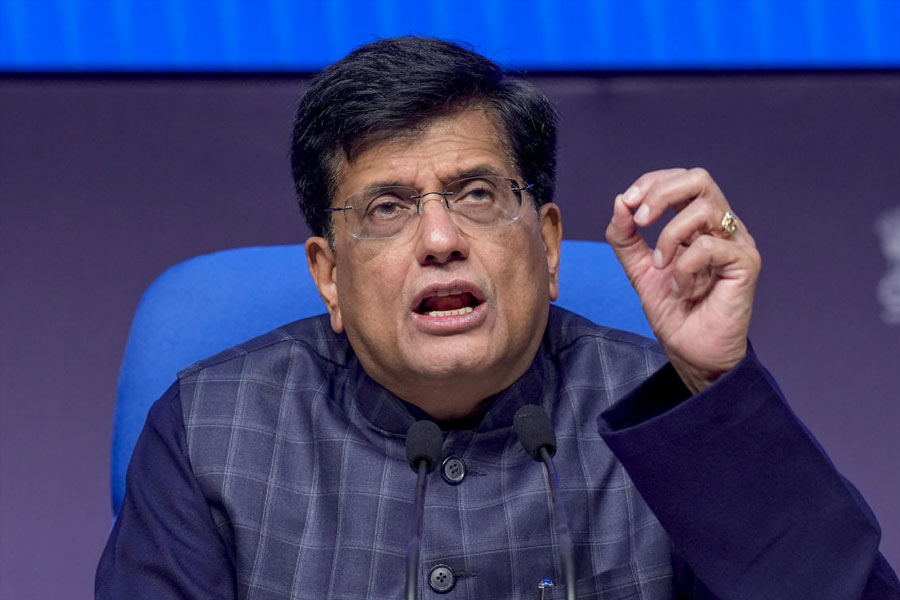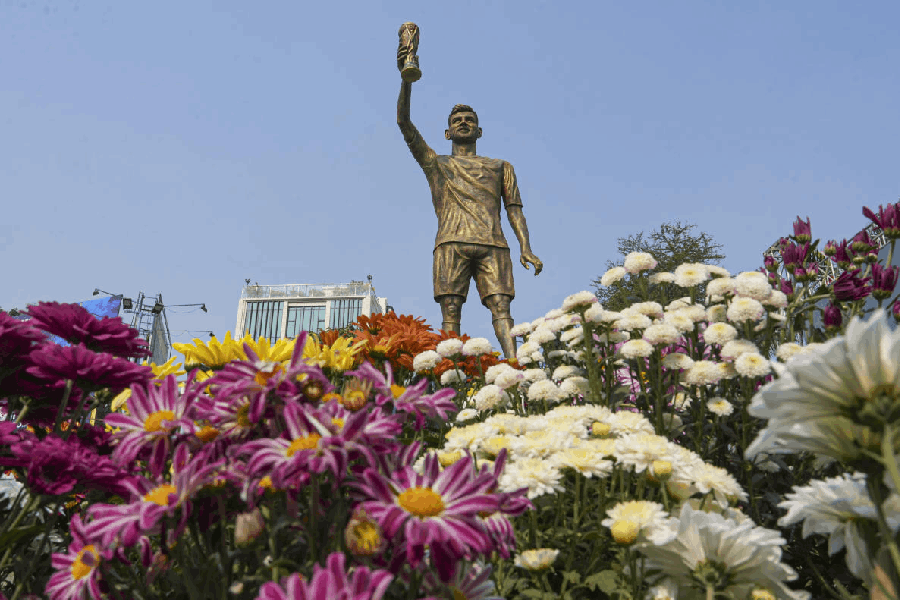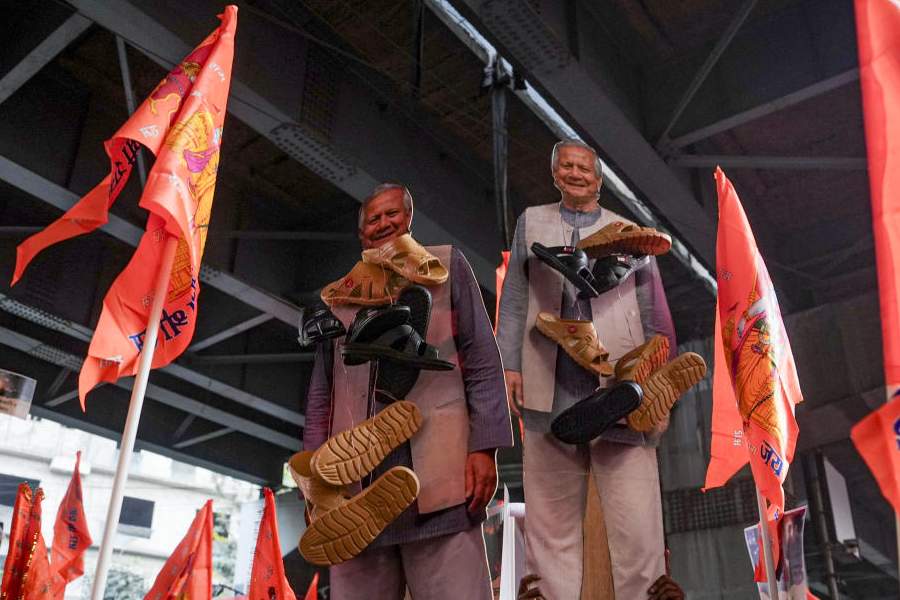 |
 |
You walk past an imposing black gate into a nearly 1.5 acre property tucked away cozily off Rashbehari Avenue in Calcutta. Inside, on your right is a blue-and-red 65-year-old mansion and next to it is a four-storeyed apartment block — the old and the new in complete sync. “Nice,” you think. Then you’re welcomed into musician Tanmoy Bose’s home on the top floor of the apartment building. As Bonnya, Bose’s wife, shows you around, you realise that the confluence of the traditional and the modern, local and global, is a motif that defines not only Bose’s style of music but even his home.
The Boses — Tanmoy, Bonnya and their two teenage sons — moved into this 2,500sqft apartment two years ago after the empty plot of land on the property was developed into a residential-cum-commercial building four years ago. “We haven’t uprooted ourselves from the old house entirely though,” says Bonnya. Bose’s mother lives in the mansion, which also houses Bose’s office, his rehearsal and instruments rooms.
 |
| Tanmoy and Bonnya Bose have made their home an extension of the confluence theme that’s a trademark of the musician’s work |
The first thing that catches your eye when you walk into the three-bedroom apartment is a brightly-painted column. A patua couple (traditional folk artists who paint pat-chitra) from Bengal’s Nadia district worked on this column for 10 days. “While two sides of the wall depict scenes from a Santhal wedding, the third side is painted with scenes from the Ramayana and the fourth celebrates the Krishna-Radha leela,” explains Tanmoy.
On the left of this column is a six-seater table that forms the centre-piece of the dining space. This is one of the very few pieces of contemporary furniture in the house. Bonnya bought all the rest from auction houses on Park Street. The wall facing the dining table is a bright, textured orange and adorned by two Japanese paintings that Tanmoy picked up from the Far East.
You look around before walking ahead towards the drawing room and can’t miss the outer wall of the kitchen — a string of little ceramic red chilli replicas that the couple got from Chinatown in New York is hung on the wall beside traditional ornamental brass utensils.
 |
| Bonnya believes that the red walls add energy and inspiration to the creative atmosphere of the music room |
Bonnya loves collecting souve-nirs from across the world, and thanks to Tanmoy’s frequent travels she already has two tall glass door cabinets full of them. The cabinets are placed against the wall to the left of the living room. Miniature Moroccan drums, Irish leprechauns, Japanese dolls — the display covers pretty much every continent of the world.
On the wall next to one of the cabinets is a fascinating collection of instruments that Tanmoy has collected from all over the world. There’s a gamelan from Indonesia, a South American wind instrument, an Indonesian harp, and an iktara, among others.
 |
| Bonnya, a candle-maker herself, fashioned a candle-stand by mounting red glass mosaic pieces from Bali on a wrought iron frame |
During the day, the living room is flooded with sunlight that streams in from the east-facing windows on the far right of the room. The wall next to the windows is a bright yellow. “The sunlight plays with the yellow and makes the room bright and cheery,” smiles Bonnya. A plush dark brown leather sofa and a contrasting red beanbag make for really comfortable seating in the room. Next to the sofa is a wood sculpture that Bonnya had made in Calcutta. “The two figures in union is a representation of the confluence of different ideas,” she says.
As you marvel at this piece of art, yet another symbol of ‘fusion’, a door left open to the right of the living room catches your eye. The walls inside are painted red, “for inspiration,” says Bonnya as she leads you into the music room. This is where Tanmoy brainstorms and composes. The conversation pieces here are undeniably the posters and photographs of cult figures like Che Guevara, Bob Marley, Satyajit Ray and Pandit Ravi Shankar.
The master bedroom is just opposite this room across the living space. On the left of the entrance to the bedroom is another ‘nook of souvenirs’. The windows in the room offer an unhindered view of the sky. “Sky-gazing is my favourite pastime. Recently, when I was recovering from a surgery I used to lie here and look out for hours. That’s when I also realised that our terrace entertains a huge variety of birds,” says Bonnya, who otherwise keeps herself occupied with candle-making. She has her own line called Aaleya.
Home is also where Tanmoy unwinds. “When I am not travelling I like to chill out at the apartment. My friends and I have what we call the Kya Baat Club — we get together, listen to music and watch movies,” says Tanmoy.
Says Bonnya: “We have a huge extended family. Our relatives who live outside Calcutta visit at least once a year and we have a grand family reunion of sorts. Having two homes, so to speak, is a boon at such times. “For the kids, the old house is a getaway. Their grandmother spoils them silly,” laughs Bonnya, “and the apartment is where they party with friends, chill out and even play cricket.”
And this duality is exactly what defines the Bose household, where the old and new exist in harmony.










